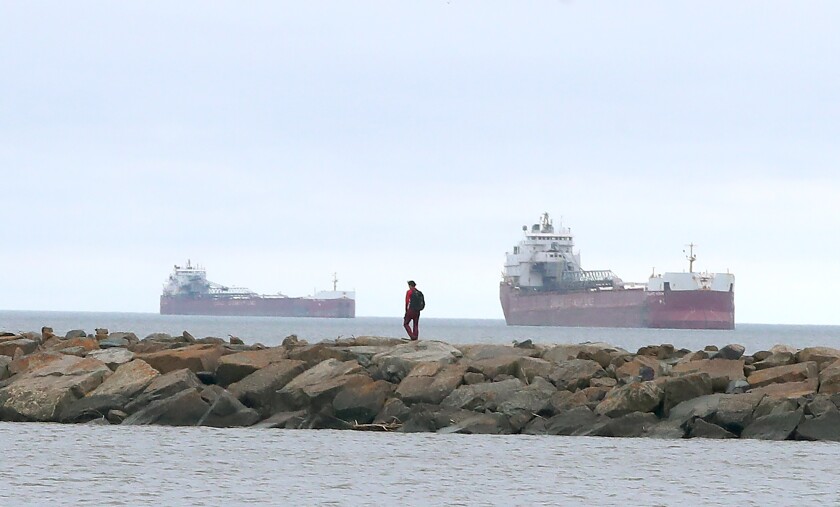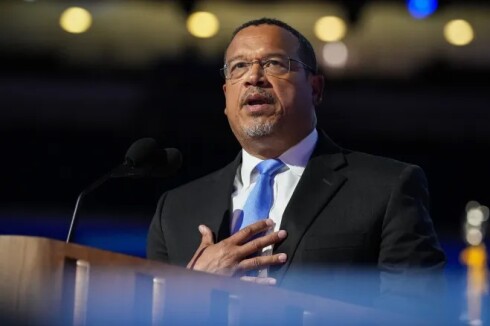The amount of cargo moving through ports on the Great Lakes is trailing behind shipments at the same time last year as the shipping season nears its end.
The Port of Duluth-Superior, which moves the most tonnage on the Great Lakes, saw around 26 million tons of cargo shipped through the end of November. That’s down about 5 % compared to the same time last year and roughly 4% from the five-season average.
ADVERTISEMENT
Iron ore, which is the port’s top commodity, was down roughly 9.8% at the end of November compared to the same time last year. Even so, Jayson Hron, spokesperson with the Duluth Seaway Port Authority, said tonnage is largely on par with the five-season average.
“One thing to keep in mind is that last year was a pretty strong year for iron ore,” Hron said.
Around 21.5 million tons of iron ore moved through the port last year — the most since 1995. Iron ore is down as domestic steel production has declined this year. Industries that rely on steel, such as construction and manufacturing, have seen spending slow amid high interest rates, according to Marketplace.

Despite that, Deb DeLuca, executive director of the Duluth Seaway Port Authority, said the port has made gains.
ADVERTISEMENT
“While not yet back to pre-COVID levels, grain tonnage is on pace for its best finish since 2021, which is a positive for our port and consumers around the world who enjoy high-quality wheat from the Midwest,” DeLuca said.
A total of nearly 600,000 tons moved through the port as of the end of November — up 3.6 % from last year. All overseas exports increased by 56 % to 588,354 tons compared to the same time last year driven primarily by grain, the port’s top export.
At Port Milwaukee, more than 1.6 million tons have moved through the port so far this season. The port handled around 2.35 million tons by the prior season’s end.
A Port Milwaukee spokesperson said the port welcomed an increase in export tonnage through the Agricultural Maritime Export Facility. The $40 million facility that opened last year and moves bulk agricultural exports has been ramping up operations.
ADVERTISEMENT
In northeastern Wisconsin, Port of Green Bay Director Dean Haen said the port gained ground on cargo shipments through November. Even so, the port has moved around 1.56 million tons, down about 4% from the same time last year.
Limestone made up more than half of cargo tonnage that moved through the port in November. Similar to Port Milwaukee, Haen said salt shipments were down due to the mild winter and leftover reserves. While tonnage is down, Haen noted the number of vessels increased, but they’re carrying smaller amounts.
Port officials assess proposed trade tariff impact
As the shipping season nears its end, port officials are assessing the potential impact of tariffs. President-elect Donald Trump has threatened to impose 25% tariffs on all imports from Mexico and Canada if they don’t do more to stop the flow of drugs and migrants coming across the northern and southern borders.
DeLuca said the threat of tariffs on Canada could be huge because officials essentially consider it domestic cargo.
ADVERTISEMENT
“We’re so intermixed with several supply chains, and most notoriously, the steelmaking supply chain,” DeLuca said. “To remove Canada from that because of the tariffs and the possibility of retaliatory tariffs is complicated.”
Hron said tariffs can be a double-edged sword for the port, noting they can support domestic steel production in the case of steel dumping . He said that tends to increase demand for iron ore, which is the port’s top cargo by tonnage.
“Anything that increases demand for Minnesota iron ore is good for our port and the region as a whole,” Hron said. “But tariffs can also lead to retaliatory trade actions by other countries, which can hurt our port because it tends to reduce exports of key cargos like grain.”
Hron said export tonnage to Canada outpaced imports by a ratio of 16 to one during the last five seasons.
ADVERTISEMENT
In a statement, Jackie Q. Carter, director of Port Milwaukee, said port officials and partners are aware of concerns surrounding tariffs.
“At this point, until the changes are enacted, we are working with our partners to explore any options to limit (the) impact on consumers,” Carter said.
Wisconsin Public Radio can be heard locally on 91.3 KUWS-FM and at wpr.org.
© Copyright 2024 by Wisconsin Public Radio, a service of the Wisconsin Educational Communications Board and the University of Wisconsin-Madison
ADVERTISEMENT
______________________________________________________
This story was written by one of our partner news agencies. Forum Communications Company uses content from agencies such as Reuters, Kaiser Health News, Tribune News Service and others to provide a wider range of news to our readers. Learn more about the news services FCC uses here.










